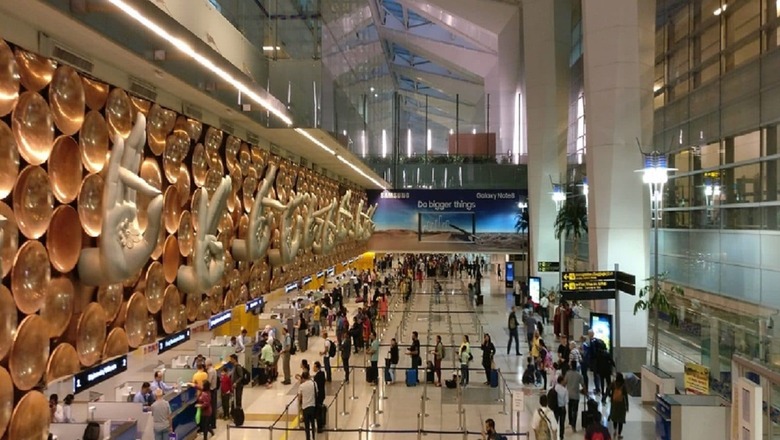
views
The government’s announcement of monetizing infrastructure to the tune of Rs 6 lakh crore or just north of USD 81 billion has been met with mixed reactions. Investors are both eager and wary. The announcement includes further privatization of airports though the government has been categorical in stating that ownership will remain unchanged. All indications are towards furthering the PPP model—with some elements modified. But the question remains: has the PPP model delivered for the country and its citizens?
Secured Returns—Paid for by the Taxpayer
As far as airports go, their returns are secured. Because of the economic regulatory model where airport operators are guaranteed a rate of return on large portions of the asset base. Put simply, spend more to get more. And because of how airport development policies have been structured, it is the flying public that pays and carries the burden of making up the revenue shortfalls of airports. As such, there is quite a difference between the intent and the impact of the much-advertised public-private partnership model to develop airports.
The economic regulatory model was tweaked in 2018 but the largest airports of the country continue to operate under the old model. Under the old model, PPP airports continue to be guaranteed a return and are able to move away revenue streams by way of joint ventures.
For the user fees that can be charged, the process involves the airports submitting traffic projections along with operating expenses, taxes, the cost of capital, any subsidies received and Capex plans to the regulator. A target revenue figure is calculated and the gap between the target revenue and actual revenue is recovered via the levy of User Development Fees (UDF) to the passengers. That’s not all, in cases where the airport is unable to secure adequate financing for Capex, the funding gap between the financing secured and financing required is again borne by the passengers via airport development fees (ADF).
Take this economic regulatory model and couple it with misaligned incentives and one is left with a market environment where passengers are forced to pay for airport largesse. The market reality is one where of a population of 1.3 billion, 84 per cent survive on a per-capita income of less than $1200. And with the job losses and wage losses that have ensued as a result of the pandemic, it is all but certain that airports will increase charges to cover the lower traffic volumes.
ALSO READ | Centre’s Ambitious Airport Monetisation Plan Cannot Take off without States Pitching in
Airport PPP Models: Intent vs Impact
A core foundation of the PPP model is the transfer of risk and equitable distribution of benefits. By bringing in private capital, the government is able to transfer the capital risk, development risk and operational risk—at least in principle. Similarly, by regulating how much airports can charge, the goal is to ensure affordable access to travel. Yet again—in principle.
The data indicates that while the country does have better terminal buildings, by various estimates more than 60 per cent of airport returns are driven by user development fees alone—fees that are levied on the flying public. The exchequer and by extension the taxpayer has also lost out because airports have gone ahead with joint ventures effectively hiving away a revenue stream that then would result in a revenue share.
Because of how airport development policies have been structured, it is the flying public that pays and carries the burden of making up the revenue shortfalls of airports. As such, there is quite a difference between the intent and the impact of the much advertised public-private partnership model to develop airports.
The Profit versus Purpose Debate Continues
Most recently, Bengaluru announced a 90 per cent increase in domestic UDF fees and a 43 per cent in international UDF. This to cover cost of Capex that continued—the pandemic notwithstanding. Other airports will follow.
Interestingly, some of these airports continued with their Capex plans while suspending payments to the Airports Authority of India. And for additional Capex, the numbers continue to boggle the mind. Lessons from the past have just not been learnt, including the unrestrained project costs for Delhi and Mumbai which were ~3.8 times and 1.7 times the initial estimate. The cost of these overruns was covered by the flying public.
While the purpose for aviation and airport development—as highlighted by the National Civil Aviation Policy document—is to provide inclusive access and connectivity across the country, the airport charges are not aligned with this. Because of the economic regulatory model, construction and capex continues and and the design and utility of this construction leave much to be debated.
While India has a large travel base what is often glossed over is the nature of demand that is extremely price-sensitive. That demands low-cost and efficient airports as opposed to extravagant and luxurious terminals where even a cup of tea is sold at a price several times its cost on the streets. Where floor space is taken up by retailers catering to the higher end of the market and where the focus on expanding infrastructure often supersedes the focus on enhancing efficiency. The profit versus purpose debate continues.
Whether the PPP model has delivered for citizens—and more importantly for all citizens—continues to be highly debatable.
Satyendra Pandey is the Managing Partner at aviation services firm AT-TV. The views expressed in this article are those of the author and do not represent the stand of this publication.
Read all the Latest News , Breaking News and Ukraine-Russia War Live Updates here.




















Comments
0 comment